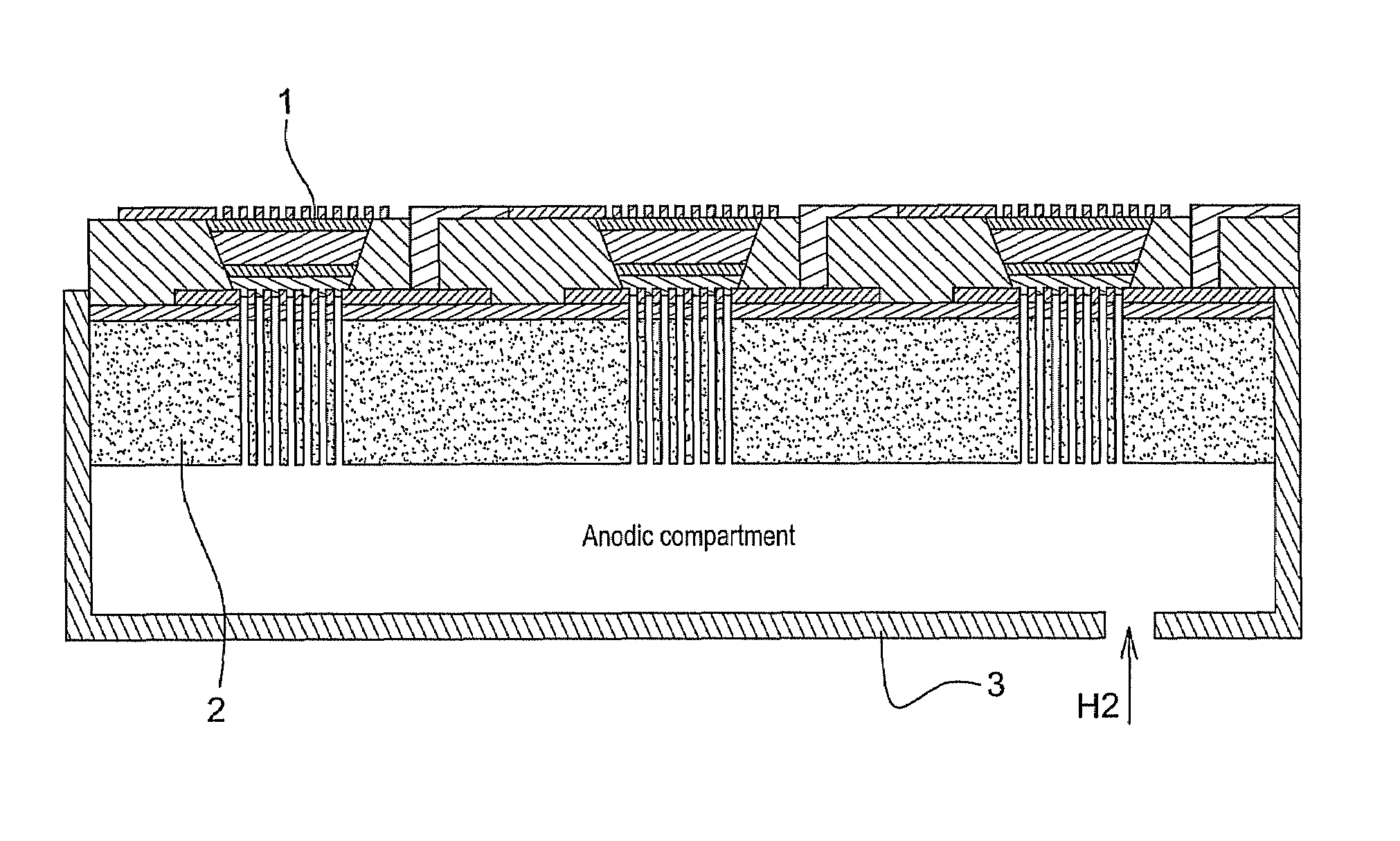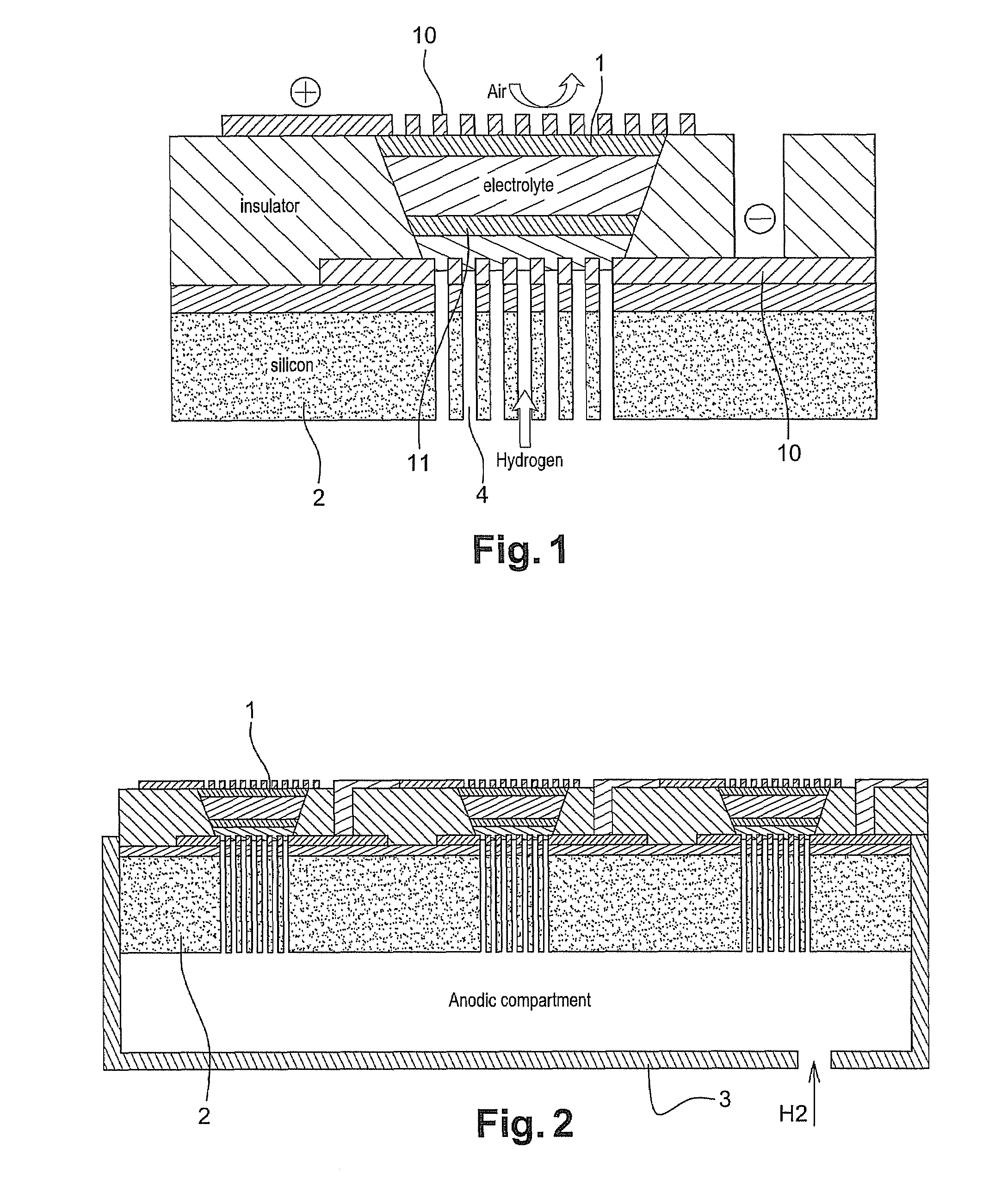Impermeable porous substrate for planar fuel cells and integrated packaging
a technology of impermeable porous substrate and fuel cell, which is applied in the direction of fuel cell, portable application adaption, sustainable building, etc., can solve the problem of relatively unattractive embodiment of said embodiment, and achieve the effect of compact aspect and better power density in w/kg or w/l
- Summary
- Abstract
- Description
- Claims
- Application Information
AI Technical Summary
Benefits of technology
Problems solved by technology
Method used
Image
Examples
Embodiment Construction
[0050]A polyethylene substrate 2, having 40% porosity with pores of 20 μm, and having a thickness of 1.6 mm is used as a support for stacking the cell core 1.
[0051]As disclosed by the invention, the first step comprises depositing a first layer of gold acting as electronic collector 10. The active anode layer 11 is then deposited by sputtering. Said layer contains a catalyst, in the case in point platinum. It is deposited locally like the gold layer, to form in the end a plurality of cell cores of 1 cm2.
[0052]A solution of Nafion® (trademark Dupont de Nemours), corresponding to a dispersion of sulfonated perfluorinated polymers, is then deposited by coating over the whole surface of the substrate. The active cathode layer 11 is then applied by sputtering, in the same way as the anode layer, also localized opposite the cathode layer (FIG. 3).
[0053]This assembly is then placed in a mould with dimensions appropriate to the size of the substrate 2. The assembly is placed under 1 bar of ...
PUM
| Property | Measurement | Unit |
|---|---|---|
| Pore size | aaaaa | aaaaa |
| Pore size | aaaaa | aaaaa |
| Thickness | aaaaa | aaaaa |
Abstract
Description
Claims
Application Information
 Login to View More
Login to View More - R&D
- Intellectual Property
- Life Sciences
- Materials
- Tech Scout
- Unparalleled Data Quality
- Higher Quality Content
- 60% Fewer Hallucinations
Browse by: Latest US Patents, China's latest patents, Technical Efficacy Thesaurus, Application Domain, Technology Topic, Popular Technical Reports.
© 2025 PatSnap. All rights reserved.Legal|Privacy policy|Modern Slavery Act Transparency Statement|Sitemap|About US| Contact US: help@patsnap.com



